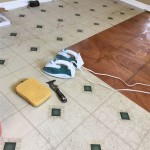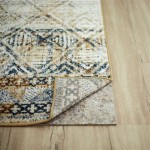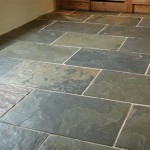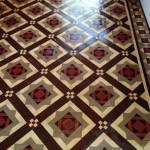Average Cost of Natural Stone Flooring Per Square Foot
Natural stone flooring has long been prized for its beauty, durability, and timeless appeal. Its inherent variations in color, texture, and pattern make each installation unique, adding a touch of luxury and sophistication to any space. However, the cost of natural stone flooring can vary significantly depending on several factors, including the type of stone, its origin, the complexity of the installation, and regional price differences. This document aims to provide a comprehensive overview of the average cost of natural stone flooring per square foot, exploring the different types of stone and the factors that influence pricing.
Understanding the various types of natural stone flooring is crucial to estimating costs accurately. Each stone possesses unique characteristics that affect its price point and suitability for different applications. Some of the most popular types include granite, marble, slate, travertine, limestone, and sandstone.
Granite is known for its exceptional hardness and resistance to stains and scratches, making it ideal for high-traffic areas such as kitchens and hallways. Marble is prized for its elegant veining and smooth, polished surface, often used in bathrooms and living rooms. Slate boasts a naturally textured surface and excellent slip resistance, suitable for both interior and exterior applications. Travertine features distinctive pitted holes and warm, earthy tones, commonly used in patios and pool decks. Limestone offers a subtle, natural look with a soft, matte finish, suitable for living rooms and bedrooms. Sandstone presents a rustic and textured appearance with a range of earthy colors, often used in entryways and outdoor spaces.
The overall cost of natural stone flooring is determined by the cost of the materials themselves, followed by the cost of installation. Material costs are influenced by the rarity, availability, and processing requirements of the stone. Installation costs depend on the complexity of the project, the size of the area, and the skill level of the installers.
Factors Influencing the Cost of Natural Stone Flooring
Several factors can significantly impact the overall cost of natural stone flooring per square foot. These factors are primarily related to the stone itself, its origin, and the specifics of the installation process.
Type of Stone: The type of stone selected is arguably the most significant factor affecting the overall cost. Rarer and more desirable stones, such as certain varieties of marble and granite, command a higher price due to their limited availability and unique aesthetic qualities. Common and readily available stones, like some types of slate or limestone, generally have a lower price point. The processing and finishing requirements also influence the cost. For example, highly polished marble requires more extensive processing than tumbled travertine, leading to a higher final price. The durability and resistance to wear of the stone also play a role in its value. Granite, being exceptionally durable, is often priced higher than softer stones like sandstone, reflecting its longevity and low maintenance requirements.
Stone Origin and Transportation: The geographical origin of the stone also contributes to its cost. Stones quarried from remote locations or imported from other countries will typically incur higher transportation costs, which are then passed on to the consumer. Stones that are locally sourced tend to be more affordable due to reduced shipping expenses and potentially lower import duties. The political and economic stability of the source country can also affect the availability and price of the stone. Stones from countries with unstable political situations might experience supply chain disruptions, leading to price increases.
Stone Grade and Quality: The quality of the stone itself also contributes to its average cost. Stone is often graded based on factors like the presence and type of veins, color consistency, structural integrity, and the presence of any imperfections. Higher-grade stones, characterized by consistent color, minimal imperfections, and strong structural integrity, command a premium price. Lower-grade stones may have more noticeable variations in color, more frequent blemishes, or weaker structural properties, leading to a lower price point. However, lower-grade stones can be suitable for applications where a more rustic or natural appearance is desired, and imperfections are considered part of the aesthetic.
Stone Size and Thickness: The size and thickness of the individual stone tiles or slabs also affect the cost. Larger tiles and thicker slabs generally require more material and are therefore more expensive. Thicker stones offer greater durability and are often preferred for high-traffic areas, but they also increase the weight and complexity of the installation process. Smaller tiles may be more cost-effective in terms of material cost, but they can require more labor to install, potentially offsetting any initial savings.
Average Material Costs Per Square Foot
To provide a clearer picture of the costs involved, the following offers a general overview of the average material costs per square foot for various types of natural stone flooring. It's essential to note that these prices are estimates and can vary significantly based on the factors discussed previously.
Granite: The average cost of granite flooring ranges from $5 to $15 per square foot for the material alone. Higher-end or more decorative varieties can exceed this range. The price depends on the color, veining, and source of the granite.
Marble: Marble flooring typically costs between $8 and $25 per square foot for the material. High-quality marble with intricate veining and rare colors can significantly increase the price. Carrara marble, a common and readily available type, tends to be on the lower end of the price spectrum.
Slate: Slate flooring generally ranges from $3 to $10 per square foot. The price depends on the thickness, color, and texture of the slate. Some types of slate, like those with unique color variations or textured surfaces, may be more expensive.
Travertine: Travertine flooring typically costs between $5 and $15 per square foot. The price depends on the grade, finish (polished, honed, tumbled), and the quantity of filler used to fill the natural pits and holes. Premium travertine with minimal filler will generally be more expensive.
Limestone: Limestone flooring typically ranges from $5 to $12 per square foot. The price depends on the color, texture, and finish of the limestone. Some types of limestone, like those with unique fossils or veining, may be more expensive.
Sandstone: Sandstone flooring generally ranges from $4 to $10 per square foot. The price depends on the color, texture, and cut of the sandstone. More uniform and precisely cut sandstone tiles will typically be more expensive.
Installation Costs and Additional Expenses
In addition to the material costs, installation costs represent a significant portion of the overall expense of natural stone flooring. These costs can vary depending on the complexity of the installation, the size of the area, and the skill level of the installers. It is critical to factor in any and all additional expenses that may be incurred. These costs include the cost of any special tools or materials needed for installation.
Labor Costs: Labor costs for installing natural stone flooring typically range from $3 to $8 per square foot, although this can vary based on location and the complexity of the project. Intricate patterns, cuts around fixtures, and uneven subfloors can all increase labor costs. Hiring experienced and skilled installers is crucial for ensuring a successful and long-lasting installation.
Subfloor Preparation: Proper subfloor preparation is essential for a stable and level surface. This may involve leveling the existing subfloor, installing a cement backer board for added support, or applying a moisture barrier. Subfloor preparation can add an additional $1 to $3 per square foot to the overall cost, depending on the extent of the work required.
Mortar, Grout, and Sealers: The cost of mortar, grout, and sealers also needs to be factored into the overall expense. High-quality materials are essential for ensuring the longevity and durability of the flooring. The cost of these materials typically ranges from $0.50 to $2 per square foot.
Sealing and Maintenance: Many natural stones require sealing to protect them from stains and moisture. The cost of sealing can range from $0.50 to $1 per square foot. Regular maintenance, including cleaning and resealing, is necessary to preserve the appearance and longevity of the flooring.
Removal and Disposal: In renovation projects, the cost of removing and disposing of existing flooring must also be considered. This can add an additional $1 to $3 per square foot, depending on the type of flooring being removed and the disposal fees in the area.
In summary, the cost of natural stone flooring per square foot is a multifaceted calculation that includes the type of stone, its origin, its grade, the labor needed for installation, and any additional expenses for subfloor preparation, materials, and maintenance. A comprehensive understanding of these factors is necessary for accurate budgeting and informed decision-making.

How Much Does Nature Stone Cost 2025

Daltile Natural Stone Collection Mongolian Spring 12 In X 24 Slate Flagstone Floor And Wall Tile 13 5 Sq Ft Case S781pattnflag1p

Faq Nature Stone Flooring For Garages Basement And Commercial Floors

What Is Natural Stone Flooring Types Pros Cons Cleaning

What Is Natural Stone Flooring Types Pros Cons Cleaning

Natural Stone Flooring Cost A Homeowner S Guide 2025 Data Angi

Daltile Natural Stone Collection Mongolian Spring 12 In X 24 Slate Flagstone Floor And Wall Tile 13 5 Sq Ft Case S781pattnflag1p

What Is Natural Stone Flooring Types Pros Cons Cleaning

Outdoor Nature Stone Flooring For Garages Basement And Commercial Floors

Natural Stone Flooring Cost A Homeowner S Guide 2025 Data Angi
See Also







